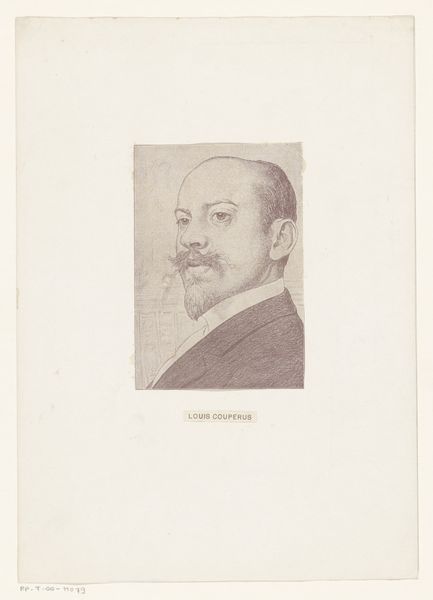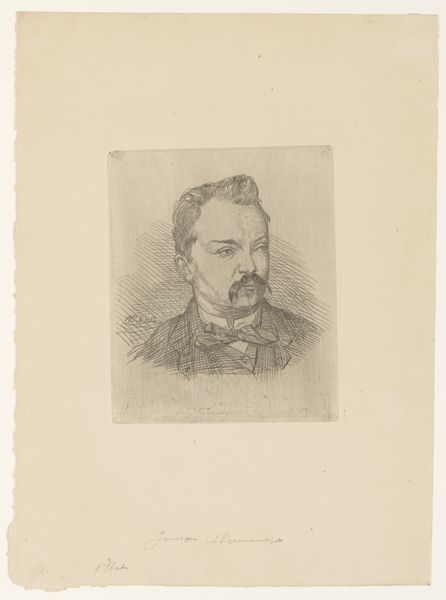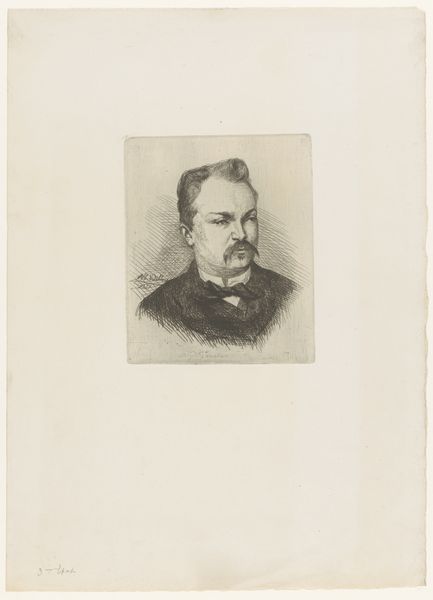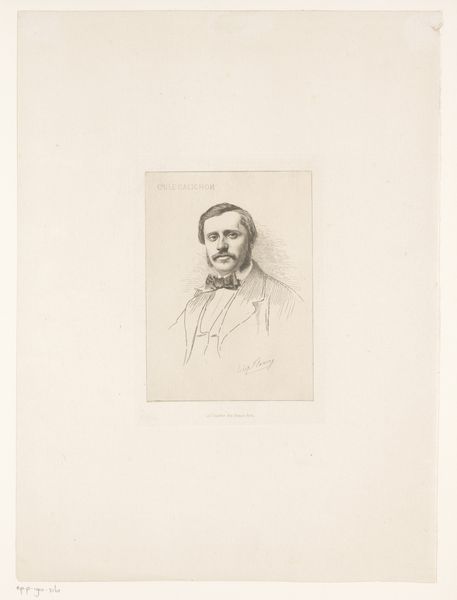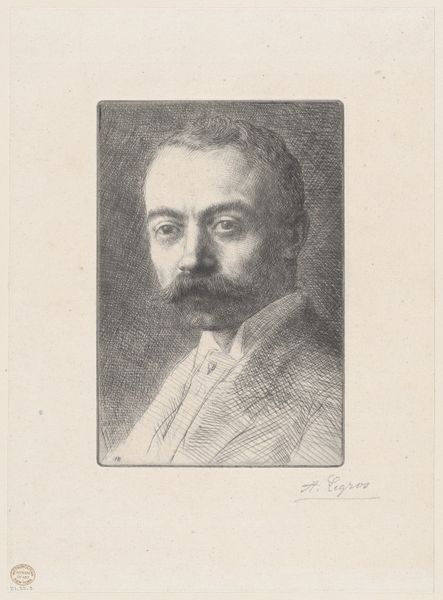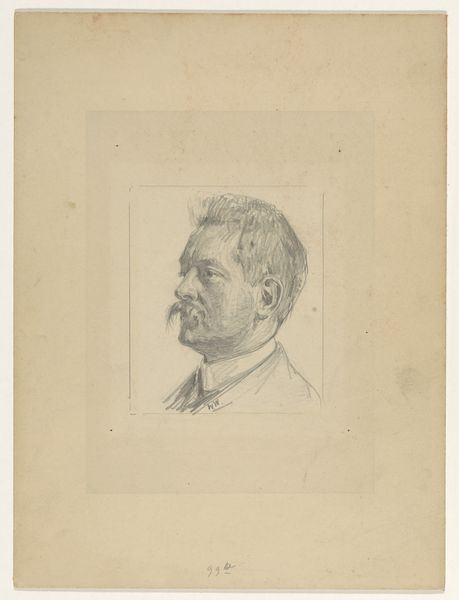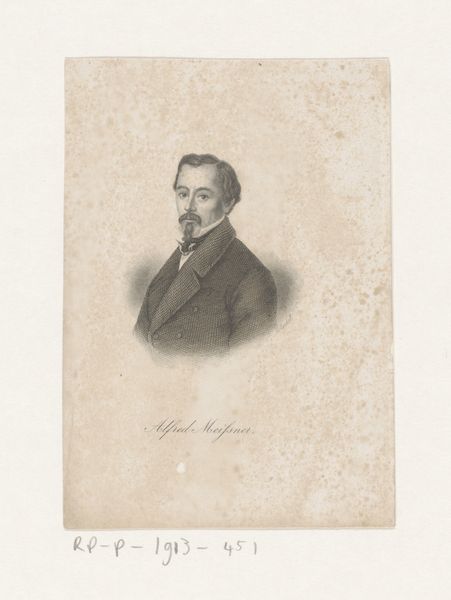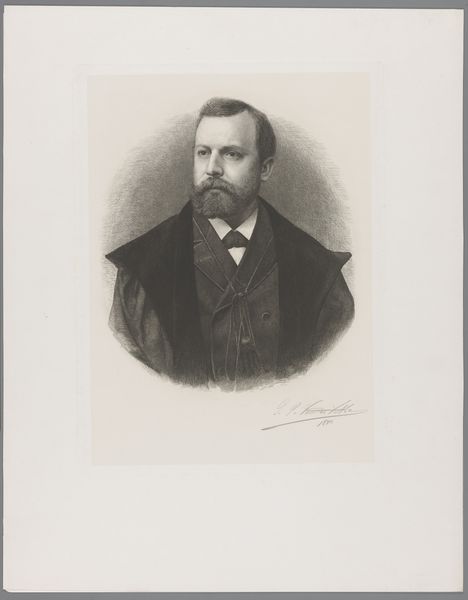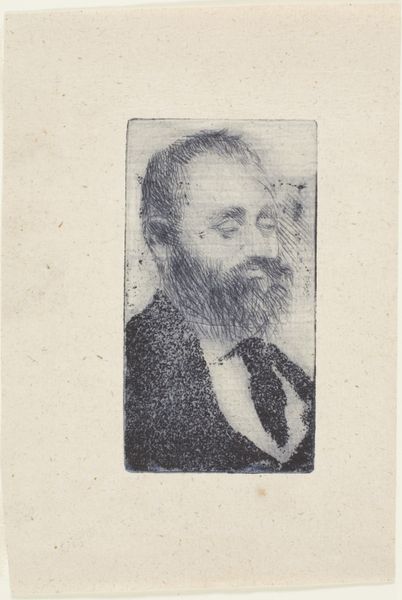
print, engraving
#
portrait
#
baroque
# print
#
history-painting
#
engraving
Dimensions: height 169 mm, width 106 mm
Copyright: Rijks Museum: Open Domain
Curator: There’s something deeply contemplative about this portrait, wouldn’t you agree? Almost melancholic. Editor: Absolutely. He looks… serious. A man caught between worlds, or maybe just worried about his taxes! Tell me more about this fellow. Curator: This is “Portrait of an Unknown Man,” an engraving made around 1660 by Lucas Vorsterman II, now residing at the Rijksmuseum. As you can tell, it’s from the Baroque era. Editor: Baroque, definitely, I see the detail! It’s stark and rather dramatic, even in this monochromatic form. And I am immediately drawn to the eyes, those dark and pensive eyes. It's amazing what printmakers could achieve. It gives me the impression of concealed intensity. Curator: That intensity you perceive could relate to the Baroque's theatricality, reflecting emotional states with striking immediacy. Though printed, portraits like this were crucial in circulating images of important figures and even establishing social identities. Engravings helped create a visual memory. Editor: A fascinating point. This unknown man’s image enters our cultural memory and lingers in our collective consciousness. The eyes almost seem to be judging me. What symbols do you see at play in the picture? What meaning does the composition hold for you? Curator: The clothing, while seemingly simple, signals a certain social standing; the plain dark doublet contrasts with the delicate collar, possibly indicating sobriety combined with some refinement. Positioned slightly off-center, perhaps subtly challenging convention. Editor: I'm compelled by its unadorned style, as the absence of extravagance directs my attention straight to his face. I get lost thinking, what was this guy all about, you know? It triggers an interest in all these nameless characters who undoubtedly had incredibly intricate stories during periods that changed history. Curator: He may remain unknown in name, but his portrait still communicates across time; it links us to 17th-century society, ideas, and identities. Editor: Absolutely, it whispers stories. He could be anyone: a philosopher, a merchant, a secret revolutionary, a pirate, who knows! A testament of humanity etched in lines, inviting contemplation. It's why art is, isn't it?
Comments
No comments
Be the first to comment and join the conversation on the ultimate creative platform.


